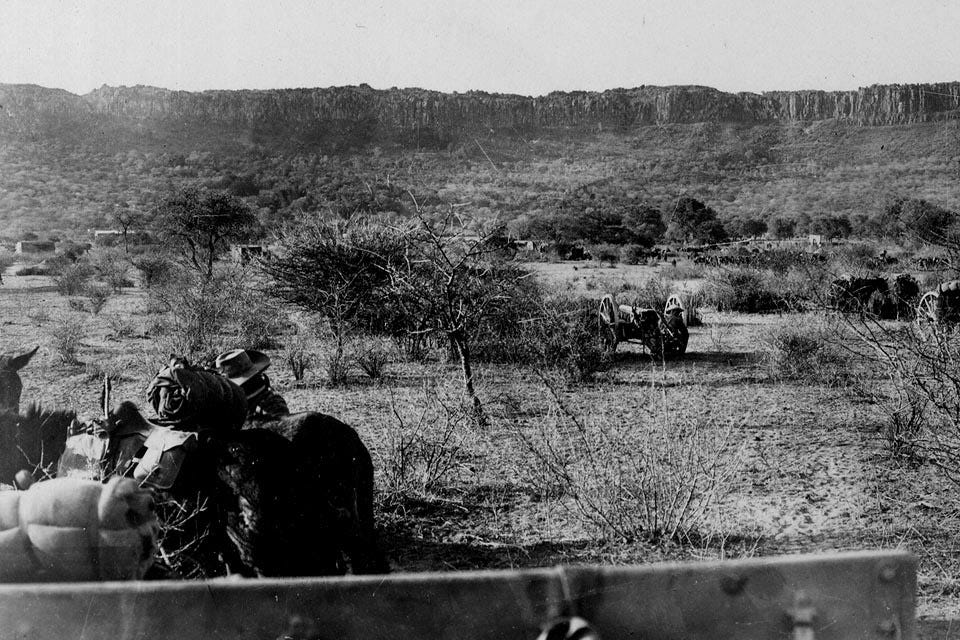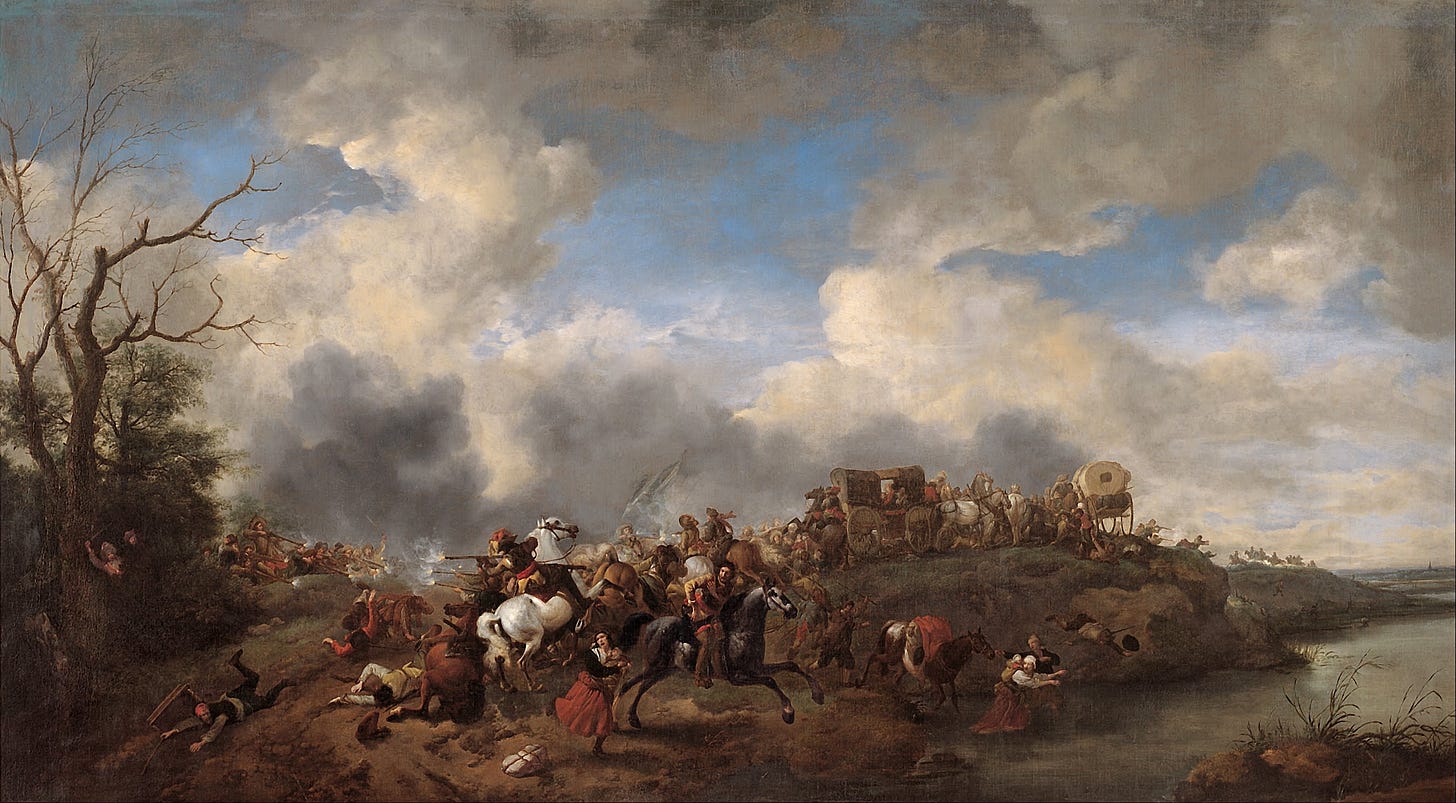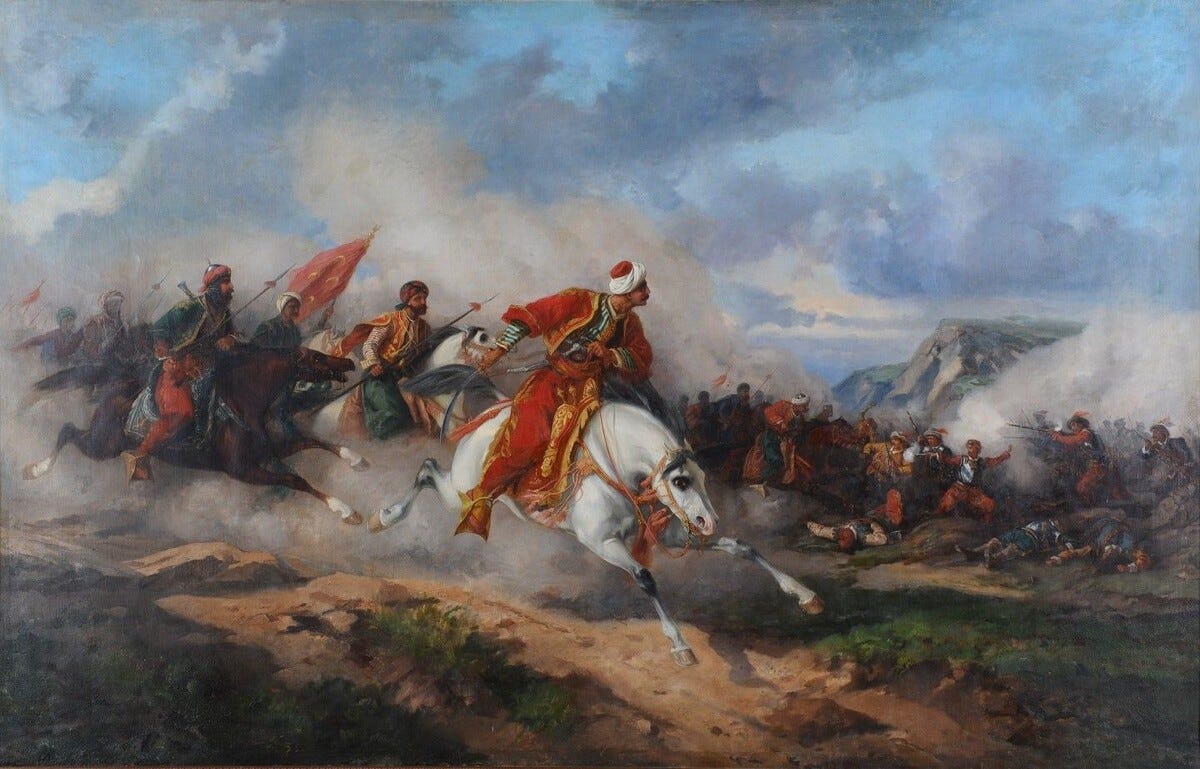Small Wars and Protracted Competition
The concept of a small war is an interesting one. As commonly used, it is an extremely broad category, embracing everything from pure insurgencies to colonial wars to limited state-on-state violence. For such wildly disparate types of conflict, what conceptual thread ties them all together?
Elsewhere I’ve proposed a taxonomy of conflicts that classifies them according to the highest level at which military force can accomplish decisive aims. In large interstate conflicts, the military can achieve strategic outcomes, winning the war outright on its own. Economic warfare, diplomacy, and effective propaganda might augment the effort, but are decidedly secondary to the effective use of arms—this is what we ordinarily think of as full-scale war.
At the opposite end of the spectrum are the low-level insurgencies in which neither side employs force above the low tactical level: government forces because they can never pin down the enemy, the insurgents because they face suicidal odds. Military force is merely one instrument among many, and far from the most important. The greater part of both the insurgent’s and counterinsurgent’s work lies in building legitimacy and winning popular support; violence is just a means to either delegitimize the government or to deliver security, mere preconditions for their respective goals. The biggest mistake a government can make is to view it primarily as a military matter: “giving the military responsibility for counterinsurgency is as sensical as defining ‘combined arms’ as a task for the artillery.”
Small wars, then, occupy the vast middle between these two poles: conflicts in which military force plays a major role, capable of accomplishing higher tactical or operational aims, but is unable to decide the matter by itself.
Characterizing Small Wars
This definition is admittedly not wholly satisfying. It is rather abstract, resists intuition, and encompasses a wide spectrum of violence—anything from the Vietnam War down to the many colonial wars that were little more than large-scale policing actions.

It is also at least somewhat dependent on circumstance. Vietnam saw extremely heavy fighting that could have been decisive had the US chosen to invade North Vietnam, a decision which only larger political considerations foreclosed. The Sri Lankan civil war ultimately was won through military force, but that was only after a long ceasefire during which the government won over some Tamil leaders, isolated the others from external support, and built up popular support within rebel-controlled areas.
A common thread running through all these examples is their inherent open-endedness. If they by definition exclude the possibility of a decisive military victory, the lower intensity of the fighting also removes the biggest material and political motivators towards a negotiated settlement. Whereas two states usually face strong pressure to find a compromise to end a war that goes on too long, low-level asymmetric conflicts can persist indefinitely.
A major reason for this is that most—although certainly not all—small wars are but single clashes within a wider competition. This is most obvious with proxy wars. The French and American wars in Vietnam and the Soviet war in Afghanistan were ultimately decisive within those country’s respective borders, but were mere episodes within the Cold War. Colonial wars of the 19th and 20th centuries, although often decisive against a particular adversary, were often parts of broader pacification campaigns in response to widespread political dissatisfaction (the Herero wars in German Namibia, various uprisings in India).
Even mostly self-contained small wars usually take place amidst irreconcilable domestic disputes. Sri Lanka’s civil war was really four distinct periods of hot conflict amidst a wider period of unrest—very different from America’s full-scale civil war that settled the matter once and for all.
Wars Small and Little
The nature of the fighting in all small wars bears comparison to a very similar term: the “little war” that was a constant feature of warfare in earlier centuries. Little war was not a separate category of conflict, but referred to the regular skirmishing and raiding between large armies in the major wars of the 16th, 17th, and 18th centuries.1 It aimed to frustrate enemy preparations, impose friction, and test the enemy’s strength during the lulls in the action.

Little war, like small wars, consisted of mostly low-level combat. Little war, like small wars, only rarely accomplished anything decisive on its own. There is a natural comparison between the operational role of little war to the grand strategic role of small wars, and also of the nature of combat in both.
This comparison only takes us so far, of course—the reverse is not always true. Korea and Ukraine are both examples of proxy wars within the framework of wider geopolitical competition, yet are undeniably full-scale wars. Other periods of protracted competition consisted of wars that were very large in scale—the Habsburg-Valois wars of the 16th century, for instance, or the wars of Louis XIV.
Yet even so, extended competition seems to invite low-level conflict. The long Habsburg-Ottoman rivalry is more the rule than the examples from Western Europe. The former took place over several centuries and were often mammoth in size, yet the great majority of actual fighting consisted of skirmishing and marauding throughout the Balkan borderlands—much of which happened even during periods of official peace.

So too with the Arab-Israeli wars. Four major conflicts were fought during the quarter century between 1948 and 1973. But the most frequent type of hostilities were border clashes, like the artillery duels on the Golan Heights or War of Attrition along the Suez, or raids by Palestinian insurgents (which didn’t even rise to the level of “small war”).
The next Dispatch for paid subscribers, which will be out later this week, will look at another such period of protracted warfare: the three centuries of Arab-Byzantine wars. In it, we will look at how the strategic priorities of both sides shaped the outbreak of warfare and the nature of the fighting itself.
Thank you for reading the Bazaar of War. Please like and share if you enjoyed, it helps more people find this. You can also support with a paid subscription, supporters receive the critical edition of the classic The Art of War in Italy: 1494-1529 and get access to exclusive pieces.
You can also support by purchasing Saladin the Strategist, in paperback or Kindle format.
This is, of course, the literal translation of the Spanish guerrilla, which came into English via the Spanish partisans who fought Napoleon’s armies. The original term evoked the “little war” they conducted, and not so much the types of insurgencies that we associate with it today. The critical difference is that “little war” was usually conducted in direct support of operations by regular troops, whereas modern guerrilla movements are completely divorced from larger military operations.

